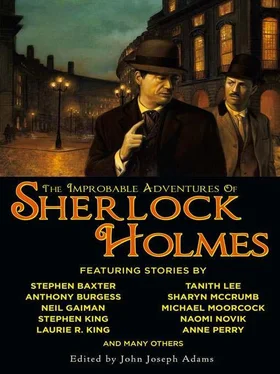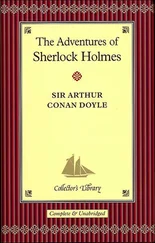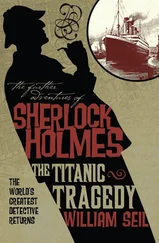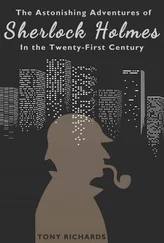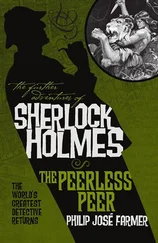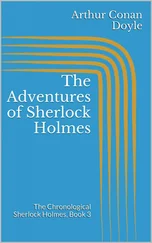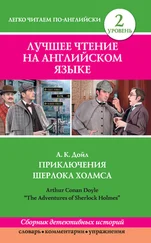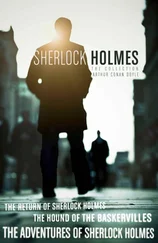"Merely a memento of the case," said Holmes. "As for young Mr. Colby, do not be too hard on him, Watson. He did the best he could, as do we all. I am not sure that he would have been entirely happy with Miss Delapore in any event. She was… much the stronger of the two."
Holmes never did elucidate for me the means by which he bridged the gap between his supposition that Viscount Delapore was engaged in kidnapping children for the purposes of some vile cult centered in Depewatch Priory, and evidence sufficient to make that evil man flee the country. If he and Carnaki found such evidence at the Priory-which I assume was the reason he had asked the young antiquarian to accompany us to Shropshire -he did not speak to me of it. Indeed, he showed a great reluctance to refer to the case at all.
For this I was grateful. The effects of the fever I had caught were slow to leave me, and even as much as three years later I found myself prey to the sense that I had learned-and mercifully forgotten-something that would utterly destroy all my sense of what the world is and should be; that would make either life or sanity impossible, if it should turn out to be true.
Only once did Holmes mention the affair, some years later, during a conversation on Freud's theories of insanity, when he spoke in passing of the old Viscount Delapore's conviction-evidently held by others in what is now termed a folie à deux-that the old man had in fact been the reincarnated or astrally transposed spirit of Lord Rupert Grimsley, once Lord of Depewatch Priory. And then he spoke circumspectly, watching me, as if he feared to wake my old dreams again and cause me many sleepless nights.
I can only be sorry that the case ended without firm conclusion, for it did, as Holmes promised me that night on the Embankment, show me unsuspected colors in the spectrum of human mentality and human existence. Yet this was not an unmixed blessing. For though I know that my fever-dream was no more than that-a fantastic hallucination brought on by illness and by Carnaki's own curious monomania about otherworld cults and ancient writings-sometimes in the shadowland between sleep and waking I think of that terrible blue-lit abyss that lies beneath an old Priory on the borders of Wales, and imagine that I hear the eerie piping of chaos rising up out of blasphemous angles of night. And in my dreams I see again the enigmatic Miss Delapore, standing before the chittering congregation of nightmares, holding aloft in her hands the skull of Lord Rupert Grimsley: the skull that now reposes in a corner of Holmes' room, wrapped in its red cardboard box.
Dynamics of a Hanging by Tony Pi
Tony Pi has a Ph.D. in Linguistics and currently works as an administrator at the Cinema Studies Institute at the University of Toronto. At the time of this writing, he is a finalist for the John W. Campbell Award for best new writer. His work has appeared in (or is forthcoming from) Abyss & Apex, On Spec, Intergalactic Medicine Show, and the anthologies Ages of Wonder, Cinema Spec, and Writers of the Future XXIII. He is currently working on a novel manuscript about the shapeshifters who first appeared in his story "Metamorphoses in Amber," which was a finalist for the Prix Aurora Award.
***
Most people know Lewis Carroll (the pen name of Charles Lutwidge Dodgson) as the author of Alice 's Adventures in Wonderland. Dodgson became good friends with the family of one of his academic colleagues, the Liddells, and would often take their children along with him when he went rowing on the nearby rivers. During these expeditions he would make up fanciful tales to entertain the children, and one of the girls, Alice, was so enchanted that she begged Dodgson to write it all down. The enthusiastic reception for the manuscript by fantasy author George MacDonald and his children convinced Dodgson to pursue publication. Dodgson's private life has been the subject of intense speculation, especially regarding his relationship with the Liddells. (Dodgson's family apparently destroyed several pages of his diary, presumably to protect his reputation.) We know that he was tormented by feelings of guilt and shame, which apparently restrained him from following his father into the priesthood. It's all very mysterious. One thing that's beyond any doubt though is that Dodgson demonstrated brilliance in many different fields. Notably, he held a lectureship in mathematics, and wrote books on logic. It's those abilities that he puts to good use in our next adventure.
***
It was in the fall of 1891 that I received a telegram from the Reverend Charles Dodgson, inviting me to his residence in Guildford, Surrey. It was not for a medical consultation, but of vital importance to the present trial of the Moriarty gang: the mystery of Professor Moriarty's cipher.
Reverend Dodgson was both an author of children's books and a mathematician. My wife was fond of the Alice books under his nom-de-plume, Lewis Carroll, while Holmes once recommended me to read his Game of Logic to hone my analytical reasoning. It surprised me that Dodgson knew of the coded notebooks, as their existence had been suppressed. It was not five months ago that my friend Sherlock Holmes perished at Reichenbach Falls in his final confrontation with James Moriarty. Even in death, Holmes struck a fatal blow against Moriarty's criminal confederates, leaving documents that thoroughly incriminated them. Inspector Patterson invited me to examine the materials recovered from one of Moriarty's secret lairs: vials of opiates among blueprints and handwritten musical scores; purloined paintings beside burned account books; and most intriguing, notebooks written in Moriarty's hand, the oldest of which had a page torn out.
Moriarty's notebooks contained mathematical formulae interspersed with code. Mycroft Holmes speculated it was a Vigenère cipher, but even he couldn't solve it. "Alas, both the Kasiski and Kerckhoffs methods failed," said Mycroft. "If only we knew what the coded messages were about. Are they musings on mathematics, or something more sinister? Find the key, Watson, and we'll glimpse Moriarty's mind."
I was intrigued by Dodgson's message. Did he know the key, when even Mycroft Holmes failed? I immediately dispatched a telegram accepting his invitation.
Thus I found myself in Guildford, sipping tea with Charles Dodgson in his parlour. The Reverend, a thin man with uneven blue eyes and sloped shoulders, tilted his left ear towards me as we talked.
"My condolences, Doctor Watson, on the untimely passing of Mr. Holmes," said he. "I fear I must bear some of the burden for his demise."
"Oh? Did you know him?" I asked.
"I knew of Holmes at Oxford, though we never met. It was James Moriarty I knew, through our years at Christ Church debating mathematics and logic. Is there a volume from Moriarty's effects, with a single coded page torn out?"
"Indeed!" I exclaimed. "How did you know?"
"Because I have that page." Dodgson retrieved a copy of Through the Looking Glass from his collection. Tucked within was the coded page he spoke of, folded and yellowed with age. "Tenniel's Jabberwock illustration always reminds me of Moriarty, hypnotic and serpentine."
"How did you get this?"
"That, Doctor, is a twisted tale," said he. "It began with the Order of Copernicus, and ended with the tragic murder of a young prodigy named Arthur Doyle."
The Order of Copernicus is a fellowship of scholars, physicians, mathematicians and philosophers. The Copernicans often invite new members to enrich their symposia with fresh ideas and voices. Moriarty first introduced me to the Order years ago, after he completed his dissertation on the Binomial Theorem. I found their debates enthralling, and participated whenever I could.
In early summer, 1879, Moriarty and I were invited to Aston by a fellow Copernican, Doctor Reginald Hoare. Reginald introduced us to his young lodger, Arthur Doyle, a medical student who was working as a dispensing assistant taking house calls on Reginald's behalf. I found him an engaging conversationalist and a sharp observer.
Читать дальше
